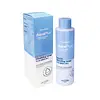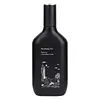What's inside
What's inside
 Key Ingredients
Key Ingredients

 Benefits
Benefits

 Concerns
Concerns

 Ingredients Side-by-side
Ingredients Side-by-side

Water
Skin ConditioningGlycerin
HumectantPEG-7 Glyceryl Cocoate
EmulsifyingPhenoxyethanol
PreservativePEG-60 Hydrogenated Castor Oil
EmulsifyingPentylene Glycol
Skin ConditioningXanthan Gum
EmulsifyingParfum
MaskingButylene Glycol
Humectant1,2-Hexanediol
Skin ConditioningCentella Asiatica Extract
CleansingSodium Hyaluronate
HumectantPolygonum Cuspidatum Root Extract
AntioxidantScutellaria Baicalensis Root Extract
AstringentCamellia Sinensis Leaf Extract
AntimicrobialGlycyrrhiza Glabra Root Extract
BleachingCaprylic/Capric Triglyceride
MaskingChamomilla Recutita Flower Extract
MaskingEthylhexylglycerin
Skin ConditioningHydrogenated Lecithin
EmulsifyingRosmarinus Officinalis Leaf Extract
AntimicrobialCeramide NP
Skin ConditioningHydrolyzed Hyaluronic Acid
HumectantHydrolyzed Sodium Hyaluronate
Skin ConditioningWater, Glycerin, PEG-7 Glyceryl Cocoate, Phenoxyethanol, PEG-60 Hydrogenated Castor Oil, Pentylene Glycol, Xanthan Gum, Parfum, Butylene Glycol, 1,2-Hexanediol, Centella Asiatica Extract, Sodium Hyaluronate, Polygonum Cuspidatum Root Extract, Scutellaria Baicalensis Root Extract, Camellia Sinensis Leaf Extract, Glycyrrhiza Glabra Root Extract, Caprylic/Capric Triglyceride, Chamomilla Recutita Flower Extract, Ethylhexylglycerin, Hydrogenated Lecithin, Rosmarinus Officinalis Leaf Extract, Ceramide NP, Hydrolyzed Hyaluronic Acid, Hydrolyzed Sodium Hyaluronate
Water
Skin ConditioningButylene Glycol
HumectantGlycerin
HumectantGlycereth-26
HumectantNiacinamide
SmoothingDiethoxyethyl Succinate
SolventTrehalose
HumectantPentylene Glycol
Skin ConditioningCamellia Sinensis Leaf Extract
AntimicrobialSodium Polyacryloyldimethyl Taurate
Emulsion StabilisingPanthenol
Skin ConditioningDipropylene Glycol
HumectantHydrogenated Polydecene
Emollient1,2-Hexanediol
Skin ConditioningAmmonium Acryloyldimethyltaurate/Vp Copolymer
Xanthan Gum
EmulsifyingAdenosine
Skin ConditioningDisodium EDTA
Methylpropanediol
SolventSodium Hyaluronate
HumectantHippophae Rhamnoides Fruit Extract
Skin ConditioningButyrospermum Parkii Butter Extract
Skin ConditioningBiosaccharide Gum-4
Skin ConditioningPolyglyceryl-10 Myristate
Skin ConditioningCnidium Officinale Rhizome Extract
Skin ConditioningEclipta Prostrata Extract
Skin ConditioningBiota Orientalis Leaf Extract
HumectantPaeonia Lactiflora Root Extract
Skin ConditioningPoria Cocos Extract
Skin ConditioningPanax Ginseng Root Extract
EmollientHydrolyzed Hyaluronic Acid
HumectantHydroxypropyltrimonium Hyaluronate
Polygonum Multiflorum Root Extract
Skin ConditioningCaprylic/Capric Triglyceride
MaskingCetyl Ethylhexanoate
EmollientBeta-Glucan
Skin ConditioningEthylhexyl Palmitate
EmollientCoptis Japonica Extract
AntimicrobialScrophularia Buergeriana Extract
Skin ConditioningScutellaria Baicalensis Root Extract
AstringentGardenia Florida Fruit Extract
Skin ConditioningPhellodendron Amurense Bark Extract
Skin ConditioningPiper Methysticum Root Extract
Skin ConditioningMacadamia Ternifolia Seed Oil
EmollientSodium Hyaluronate Crosspolymer
HumectantAcetyl Hexapeptide-8
HumectantGlucose
HumectantCentella Asiatica Extract
CleansingSaccharomyces Ferment Filtrate
HumectantSodium Acetylated Hyaluronate
HumectantPhytosteryl/Behenyl/Octyldodecyl Lauroyl Glutamate
Skin ConditioningCholesterol
EmollientBrassica Campestris Sterols
EmollientHydrogenated Lecithin
EmulsifyingArtemisia Capillaris Extract
Polyglyceryl-10 Oleate
Skin ConditioningPotassium Cetyl Phosphate
EmulsifyingCeramide NP
Skin ConditioningAsiaticoside
AntioxidantAsiatic Acid
Skin ConditioningMadecassoside
AntioxidantMadecassic Acid
Skin ConditioningCeramide Ns
Skin ConditioningCeramide EOP
Skin ConditioningCarbomer
Emulsion StabilisingCaprylyl Glycol
EmollientTrideceth-10
CleansingCaramel
Cosmetic ColorantFructose
HumectantMaltodextrin
AbsorbentPolysilicone-15
UV FilterHydroxyacetophenone
AntioxidantTromethamine
BufferingEthylhexylglycerin
Skin ConditioningWater, Butylene Glycol, Glycerin, Glycereth-26, Niacinamide, Diethoxyethyl Succinate, Trehalose, Pentylene Glycol, Camellia Sinensis Leaf Extract, Sodium Polyacryloyldimethyl Taurate, Panthenol, Dipropylene Glycol, Hydrogenated Polydecene, 1,2-Hexanediol, Ammonium Acryloyldimethyltaurate/Vp Copolymer, Xanthan Gum, Adenosine, Disodium EDTA, Methylpropanediol, Sodium Hyaluronate, Hippophae Rhamnoides Fruit Extract, Butyrospermum Parkii Butter Extract, Biosaccharide Gum-4, Polyglyceryl-10 Myristate, Cnidium Officinale Rhizome Extract, Eclipta Prostrata Extract, Biota Orientalis Leaf Extract, Paeonia Lactiflora Root Extract, Poria Cocos Extract, Panax Ginseng Root Extract, Hydrolyzed Hyaluronic Acid, Hydroxypropyltrimonium Hyaluronate, Polygonum Multiflorum Root Extract, Caprylic/Capric Triglyceride, Cetyl Ethylhexanoate, Beta-Glucan, Ethylhexyl Palmitate, Coptis Japonica Extract, Scrophularia Buergeriana Extract, Scutellaria Baicalensis Root Extract, Gardenia Florida Fruit Extract, Phellodendron Amurense Bark Extract, Piper Methysticum Root Extract, Macadamia Ternifolia Seed Oil, Sodium Hyaluronate Crosspolymer, Acetyl Hexapeptide-8, Glucose, Centella Asiatica Extract, Saccharomyces Ferment Filtrate, Sodium Acetylated Hyaluronate, Phytosteryl/Behenyl/Octyldodecyl Lauroyl Glutamate, Cholesterol, Brassica Campestris Sterols, Hydrogenated Lecithin, Artemisia Capillaris Extract, Polyglyceryl-10 Oleate, Potassium Cetyl Phosphate, Ceramide NP, Asiaticoside, Asiatic Acid, Madecassoside, Madecassic Acid, Ceramide Ns, Ceramide EOP, Carbomer, Caprylyl Glycol, Trideceth-10, Caramel, Fructose, Maltodextrin, Polysilicone-15, Hydroxyacetophenone, Tromethamine, Ethylhexylglycerin
 Reviews
Reviews

Ingredients Explained
These ingredients are found in both products.
Ingredients higher up in an ingredient list are typically present in a larger amount.
1,2-Hexanediol is a synthetic liquid and another multi-functional powerhouse.
It is a:
- Humectant, drawing moisture into the skin
- Emollient, helping to soften skin
- Solvent, dispersing and stabilizing formulas
- Preservative booster, enhancing the antimicrobial activity of other preservatives
Butylene Glycol (or BG) is used within cosmetic products for a few different reasons:
Overall, Butylene Glycol is a safe and well-rounded ingredient that works well with other ingredients.
Though this ingredient works well with most skin types, some people with sensitive skin may experience a reaction such as allergic rashes, closed comedones, or itchiness.
Learn more about Butylene GlycolCamellia Sinensis Leaf Extract is derived from the leaves of the tea plant. Black tea, green tea, and oolong tea are all harvested from this plant.
This ingredient has many skin benefits:
This ingredient contains polyphenols, a strong antioxidant. Antioxidants help fight off molecules that damage skin cells.
On top of that, the antioxidants in green tea neutralize free-radicals from the sun. This gives the skin some extra UV protection, but should not replace sunscreen.
Many components of tea have anti-inflammatory properties.
Polyphenols and L-theanine help soothe the skin and reduce irritation. The caffeine in Camellia Sinensis Leaf Extract helps calm inflamed blood vessels.
Other compounds found in tea include: Vitamin Bs, linoleic acid, magnesium, calcium, iron, and zinc.
Research has shown both drinking Camellia Sinensis Leaf Tea and applying it to the skin can help boost skin elasticity and hydration. Studies also show using tea extract may reduce sebum, or oil, production.
Learn more about Camellia Sinensis Leaf ExtractThis ingredient is an emollient, solvent, and texture enhancer. It is considered a skin-softener by helping the skin prevent moisture loss.
It helps thicken a product's formula and makes it easier to spread by dissolving clumping compounds.
Caprylic Triglyceride is made by combining glycerin with coconut oil, forming a clear liquid.
While there is an assumption Caprylic Triglyceride can clog pores due to it being derived from coconut oil, there is no research supporting this.
Learn more about Caprylic/Capric TriglycerideCentella Asiatica Extract (Centella) is derived from an herb native to Southeast Asia. It is famous for its anti-inflammatory and soothing properties.
Centella is rich in antioxidants and amino acids, such as Madecassic Acid and Asiaticoside.
Studies show the compounds in centella help with:
The combination of all these properties makes centella effective at soothing, hydrating, and protecting the skin.
Other great components of centella include Vitamin A, vitamin C, several B vitamins, and Asiatic Acid.
Fun fact: Centella has been used as a medicine and in food for many centuries. As a medicine, it is used to treat burns, scratches, and wounds.
Learn more about Centella Asiatica ExtractCeramide NP is a type of ceramide.
Ceramides are intercellular lipids naturally found in our skin that bonds dead skin cells together to create a barrier. They are known for their ability to hold water and thus are a great ingredient for dry skin.
Ceramides are an important building block for our skin barrier. A stronger barrier helps the skin look more firm and hydrated. By bolstering the skin ceramides act as a barrier against irritating ingredients. This can help with inflammation as well.
If you would like to eat ceramides, sweet potatoes contain a small amount.
Read more about other common types of ceramides here:
Ceramide AP
Ceramide EOP
Ethylhexylglycerin (we can't pronounce this either) is commonly used as a preservative and skin softener. It is derived from glyceryl.
You might see Ethylhexylglycerin often paired with other preservatives such as phenoxyethanol. Ethylhexylglycerin has been found to increase the effectiveness of these other preservatives.
Glycerin is already naturally found in your skin. It helps moisturize and protect your skin.
A study from 2016 found glycerin to be more effective as a humectant than AHAs and hyaluronic acid.
As a humectant, it helps the skin stay hydrated by pulling moisture to your skin. The low molecular weight of glycerin allows it to pull moisture into the deeper layers of your skin.
Hydrated skin improves your skin barrier; Your skin barrier helps protect against irritants and bacteria.
Glycerin has also been found to have antimicrobial and antiviral properties. Due to these properties, glycerin is often used in wound and burn treatments.
In cosmetics, glycerin is usually derived from plants such as soybean or palm. However, it can also be sourced from animals, such as tallow or animal fat.
This ingredient is organic, colorless, odorless, and non-toxic.
Glycerin is the name for this ingredient in American English. British English uses Glycerol/Glycerine.
Learn more about GlycerinHydrogenated Lecithin is created from the hydrogenation of lecithin (a group of phospholipids). Hydrogenation is a chemical reaction between hydrogen and another element.
This ingredient is an emollient and emulsifier. As an emollient, it helps soften skin by trapping moisture within. As an emulsifier, it prevents oil and water ingredients from separating.
Hydrolyzed Hyaluronic Acid is a form of hyaluronic acid. It is created by the hydrolysis of hyaluronic acid with a high molecular weight. Once created, Hydrolyzed Hyaluronic Acid has a low molecular weight.
Low molecular weight HA has been shown to hydrate and increase elasticity of the skin. Increasing elasticity is also associated with reduction of wrinkle depth.
One study found topical low molecular weight hyaluronic acid may be considered for the treatment of rosacea in the adult population. However, we always recommend speaking with a professional about your skin concerns.
Hyaluronic acids are a humectant. This means they draw moisture from the air. Hyaluronic acids help moisturize, soothe, and protect the skin.
Read more about other common forms of hyaluronic acid:
Learn more about Hydrolyzed Hyaluronic AcidPentylene glycol is typically used within a product to thicken it. It also adds a smooth, soft, and moisturizing feel to the product. It is naturally found in plants such as sugar beets.
The hydrophilic trait of Pentylene Glycol makes it a humectant. As a humectant, Pentylene Glycol helps draw moisture from the air to your skin. This can help keep your skin hydrated.
This property also makes Pentylene Glycol a great texture enhancer. It can also help thicken or stabilize a product.
Pentylene Glycol also acts as a mild preservative and helps to keep a product microbe-free.
Some people may experience mild eye and skin irritation from Pentylene Glycol. We always recommend speaking with a professional about using this ingredient in your routine.
Pentylene Glycol has a low molecular weight and is part of the 1,2-glycol family.
Learn more about Pentylene GlycolScutellaria Baicalensis Root Extract comes from the Baikal skullcap or Chinese skullcap plant. This plant is native to Northeast Asia and can be found in China, Mongolia, Korea, and Siberia.
In cosmetics, Scutellaria Baicalensis Root Extract provides antioxidant and anti-inflammatory benefits. This is due to the flavonoid composition of Scutellaria Baicalensis Root Extract.
In Chinese traditional folk medicine, Scutellaria Baicalensis Root Extract is used to help treat lung issues and hypertension.
Learn more about Scutellaria Baicalensis Root ExtractSodium Hyaluronate is hyaluronic acid's salt form. It is commonly derived from the sodium salt of hyaluronic acid.
Like hyaluronic acid, it is great at holding water and acts as a humectant. This makes it a great skin hydrating ingredient.
Sodium Hyaluronate is naturally occurring in our bodies and is mostly found in eye fluid and joints.
These are some other common types of Hyaluronic Acid:
Learn more about Sodium HyaluronateWater. It's the most common cosmetic ingredient of all. You'll usually see it at the top of ingredient lists, meaning that it makes up the largest part of the product.
So why is it so popular? Water most often acts as a solvent - this means that it helps dissolve other ingredients into the formulation.
You'll also recognize water as that liquid we all need to stay alive. If you see this, drink a glass of water. Stay hydrated!
Learn more about WaterXanthan gum is used as a stabilizer and thickener within cosmetic products. It helps give products a sticky, thick feeling - preventing them from being too runny.
On the technical side of things, xanthan gum is a polysaccharide - a combination consisting of multiple sugar molecules bonded together.
Xanthan gum is a pretty common and great ingredient. It is a natural, non-toxic, non-irritating ingredient that is also commonly used in food products.
Learn more about Xanthan Gum